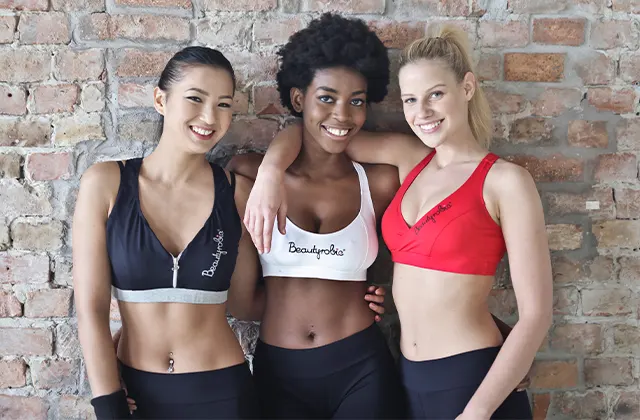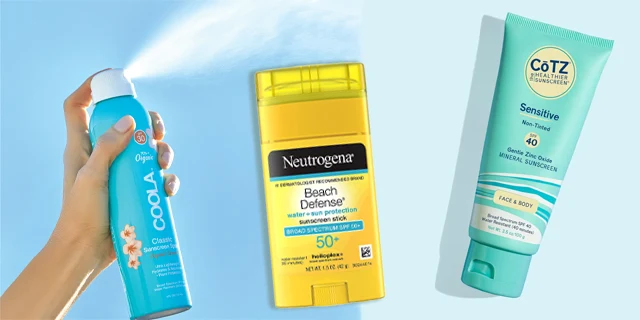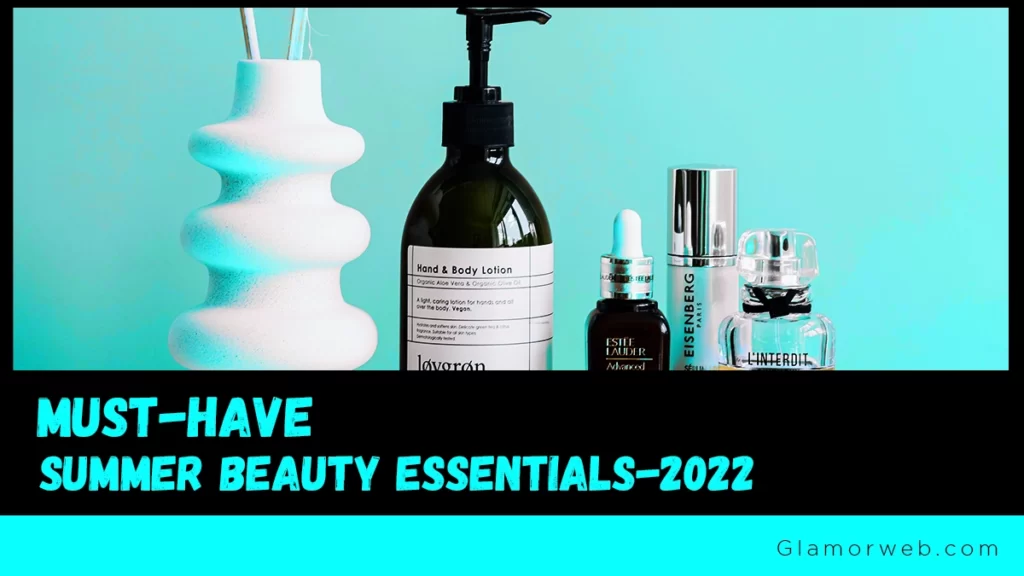It’s no secret that good sunscreen is essential to healthy skin all year round, but when the summer season arrives, you may need to step up your protection game.
Everyone 6 months of age and older, regardless of skin tone, should use it on exposed skin when they go outside.
So, how to choose the best sunscreen? What are some things you should keep in mind while buying one?
We talked to the experts and researched to clear up the common sunscreen confusion from SPF number to skin type and tone.
Here, we help you find the best sunscreen for you. So that you can get a safe dose of sun.
Table of Contents
How does sunscreen work?
For buying the best sunscreen for you, it is important to understand how sunscreen works for your skin. Let’s read-
Sunscreen mainly works by blocking and absorbing UV rays through various physical and chemical particles.
There are two main types of sunblock available: physical and chemical.
Physical VS chemical sunscreen
Mineral Sunscreen
Physical sunscreens, also known as “mineral sunscreens”, contain inorganic physical particles such as zinc oxides and titanium dioxide that reflect, scatter, and block the sun’s rays before they penetrate the skin.
Chemical Sunscreen
Chemical sunscreens contain organic carbon-based active ingredients designed to absorb UV radiation upon contact.
They also absorb the sun’s rays and release energy in the form of heat.
Let’s take a closer look at the differences between physical and chemical sunscreen to choose the right sunscreen for you-
| Table of Content | Physical Sunscreen | Chemical Sunscreen |
|---|---|---|
| How It Work | Block the sun’s rays before the UV rays penetrate the skin | Absorb UV radiation before it can reach your skin |
| Ingredients | Physical sunscreen usually contains zinc oxide and titanium dioxide | Chemical sunscreen typically contains a combination of filters, including avobenzone, bemotrizinol, homosalate, and oxybenzone |
| Texture | Often thicker, take more effort to rub in, and also leave a white film on the skin | Thinner and more lightweight than physical (mineral) sunscreens |
| Non-comedogenic Or Not | Non-comedogenic, meaning they’re less likely to clog the pores | Comedogenic, more likely to clog pores and extreme breakouts for those with oily skin |
| For Sensitive Skin | A great choice for those struggling with rosacea and other skin conditions | Chemical sunscreens are more likely to cause irritation and redness |
| Application | Mineral sunscreens take effect immediately and can be applied right before sun exposure | Chemical sunscreen, which is absorbed into the skin, needs to be applied 30 minutes before going outside |
| Best Products | Top 10 physical sunscreen | 10 Best Sunscreens Without Harmful Chemicals |
Apart from types of sunscreen, there are so many other factors that help you to find the perfect one for your skin type-
Check the Key ingredients of your sunscreen
Check the active ingredients in sunscreen. Avoid scary ingredients like oxybenzone, octinoxate, avobenzone, and retinyl palmitate.
Several studies have shown that oxybenzone and octinoxate can increase oestrogen levels in rats.
However, any hormonal effect in humans appears to occur within the first few hours of application and then disappears, even with prolonged daily use.
While avobenzone has not been found to cause hormone disruption like the others, it does cause a high rate of irritation.
And on the other hand, retinyl palmitate is believed to increase the rate of skin tumors.
According to EWG, only two ingredients, zinc oxide, and titanium dioxide can be classified as safe and effective.
Consider the Level of Sun Exposure
When choosing a sunscreen, another important factor to keep in mind is your level of sun exposure.
This means you should consider how long you will be exposed to the sun, what activities you will do when exposed to it, and how strong it is.
Usually, the strength of the Sun is measured by the UV index, which ranges from 1 (low) to 11+ (extreme).
These UV rays are strongest from 10 a.m. to 4 p.m., and when the UV index is 8 or higher, our unprotected skin can burn in 15 minutes or less.
| Everyday | Daily when you will be in the sun and shade, be sure to apply sunscreen with at least SPF 15. |
| Outdoor | If you’re outside for two hours or longer, choose a sunscreen with an SPF of 30 or higher, depending on your skin tone. |
| Sports Or Swimming | If you’re going for outdoor sports or swimming, it’s best to choose a sweat-resistant or water-resistant sunscreen. Use SPF 30 or higher depending on your skin tone and reapply every 40 to 60 minutes. |
Consider Sun Protection Factor (SPF)
SPF is primarily a measure of how much UV rays (a type of radiation that causes sunburns, skin aging, and other skin damage) the sunscreen can filter out.
As the SPF value increases, the protection against sunburn increases.
When used as directed, a sunscreen with an SPF of 15 blocks 93 percent of UV rays from reaching your skin.
SPF 30 blocks about 97 percent of UV rays and SPF 50 blocks 98 percent.
Note:- While higher SPFs provide more protection, it doesn’t mean that they protect skin and last longer than a lower number, so you need to reapply them just as often.
Choose Broad Spectrum SPF
The American Dermatology Association (ADA) recommends a sunscreen labeled “broad-spectrum,” as it protects against both UVA and UVB rays.
UVA rays cause your skin to age prematurely, causing wrinkles and age spots, while UVB rays cause sunburns.
Even with a high SPF (sun protection factor), if the sunscreen isn’t broad-spectrum, you won’t be protected from all UVA rays.
So always go for a sunscreen with broad-spectrum coverage and SPF 30 to 50.
SPF According to Your Skin Tone

Skin tone plays a major role in deciding the right SPF according to your skin type.
For example, A person with fair skin requires at least SPF30, whenever goes outside, whether spending 15 minutes or two hours exposed to the sun’s rays.
However, to protect your skin from three or four hours of sun exposure, you’ll need to apply SPF50.
In contrast, a person with very dark skin is less likely to burn, and may only need SPF15 to protect their skin for up to four hours.
The chart below shows the SPF ratings for different skin tones-
| Hours In The Sun | Very Fair | Fair | Light | Medium | Dark |
|---|---|---|---|---|---|
| 1 | SPF 30 | SPF 15 | SPF 15 | SPF 8-14 | SPF 8-14 |
| 2 | SPF 30 | SPF 30 | SPF 30 | SPF 15 | SPF 8-14 |
| 3 | SPF 50 | SPF 50 | SPF 30 | SPF 15 | SPF 15 |
| 4 | SPF 50-110 | SPF 50 | SPF 30 | SPF 30 | SPF 15 |
| 5+ | SPF 50-110 | SPF 50-110 | SPF 50-110 | SPF 50 | SPF 30 |
| Sun Effect on Skin | Never tans, Always burns | Tans slowly, Burns easily | Usually burns first | Burns minimally | Rarely burns |
Type Of Your Skin

Many sunscreens are specifically made to help people with dry, oily, acne-prone, or sensitive skin.
According to board-certified dermatologists and skin cancer surgeons, here’s a concise guide to help you choose a sunscreen for your skin type.
Sensitive Skin
People with sensitive skin avoid oxybenzone, alcohol, and parabens and use mineral (physical) sunscreens with high SPF instead of chemical sunscreens.
Acne-Prone Skin
People with acne-prone skin look for non-comedogenic, oil-free, non-greasy, and fragrance-free sunscreens.
Dry Skin
Opt for a hydrating sunscreen with good SPF. Choose one with ingredients like glycerin, lanolin, oils, and aloe that help in adding moisture to your skin.
So that your skin is not only protected from harmful radiation but also keeps skin soft and supple.
Oily Skin
Choose a sunscreen that is lightweight and non-greasy. It will blend on your skin easily and will not clog your pores.
If you have extremely oily skin, you can also opt for a matte finish so that your skin doesn’t look too oily after applying.
Best Sunscreens According To Skin Type
| Skin Type | Product Recommendation |
|---|---|
| Dry Skin | Aveeno Positively Radiant Daily Moisturizer |
| Oily Skin | Biore UV Aqua Rich Watery Essence SPF 50 PA +++ |
| Sensitive Skin | Cotz Sensitive Sunscreen for Body and Face SPF 40 |
| Acne-Prone Skin | Cetaphil DermaControl Daily Moisturizer SPF 30 |
| Darker Skin Tone | Neutrogena Sheer Zinc Face Sunscreen SPF 50 |
| Makeup Wearer | Neutrogena Invisible Daily Defense Face Mist SPF 50 |
Sunscreen Formulation

Sunscreen formulation generally refers to the delivery format of sunscreen and affects how it feels and looks on a person’s skin.
There are three common sunscreen formulations and each of these forms has its benefits, all of them can protect from the sun if used properly.
1. Sunscreen Lotion & Cream
Lotions and creams are more hydrating and great for those with dry skin. They are also available in many forms to cater to oily and acne-prone skin types.
2. Sunscreen Spray
Spray sunscreens are perfect for applying to hard-to-reach places on the body. They are a good choice for areas with hairy skin.
However, you should avoid using spray sunscreens on your face as it is not safe to inhale them. If needed, spray the sunscreen on your hand first and rub it in.
3. Sunscreen Stick
Of these options, the sunscreen stick is the most portable and least messy. You can use it by applying it to your skin and rubbing them.
Tips to Avoid The Harmful Effects of The Sun

Reapply Sunscreen Every Two Hours
No matter what sunscreen you’re using, you should reapply every two hours, or after working, swimming, or playing outside.
Limit Your Exposure To midday Sun
Limit sun exposure, especially during the afternoon hours i.e. between 10 am and 4 pm.
Carry An Umbrella
If you need to be out in the sun, it’s best to carry an umbrella to be well protected.
Wear protective clothing
Wear tightly woven, loose-fitting clothing with a wide-brimmed hat and sunglasses to protect your skin, eyes, and hair as much as possible.
FAQ’s
What is the difference between chemical and physical sunscreen?
Chemical sunscreens have active ingredients that absorb the sun’s UV radiation before it can reach your skin.
Whereas a physical sunscreen contains zinc oxide or titanium dioxide that sits on top of the skin and blocks the sun’s rays before the UV rays penetrate the skin.
Is SPF 30 or 50 better for daily use?
A minimum of SPF 15 or 30 is recommended for everyday wear. If you spend time outdoors, choose a product with higher SPF or as per your skin tone, and don’t forget to reapply again.
Which is better chemical Or physical sunscreen?
Since chemical sunscreens tend to be absorbed into your skin, they are generally not recommended for daily use. Physical sunscreens are better at helping you protect your skin effectively and safely.
Is Sunscreen Good For Your Skin?
Wearing sunscreen is truly an outstanding and least demanding way of safeguarding your skin’s appearance and well-being at whatever stage in life. Normal sunscreen forestalls sunburn, skin cancer, and untimely maturing.
Which SPF Sunscreen is Best?
Dermatologists recommend applying sunscreen with an SPF of at least 30. About 93% of UVB rays are blocked by SPF 15 and 97% are blocked by SPF 30. The ADA recommends using an SPF of 30 or higher.



